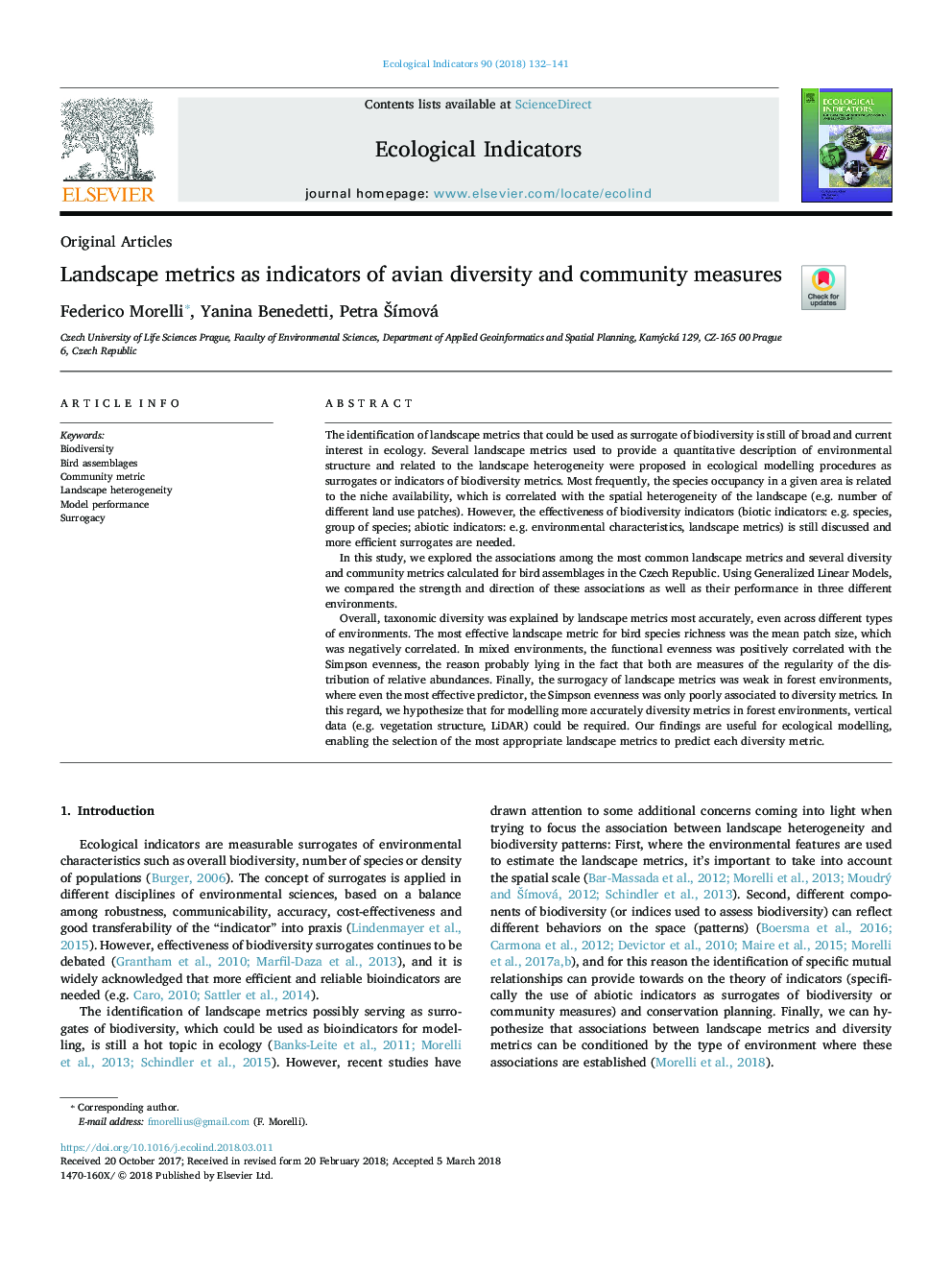| Article ID | Journal | Published Year | Pages | File Type |
|---|---|---|---|---|
| 8845376 | Ecological Indicators | 2018 | 10 Pages |
Abstract
Overall, taxonomic diversity was explained by landscape metrics most accurately, even across different types of environments. The most effective landscape metric for bird species richness was the mean patch size, which was negatively correlated. In mixed environments, the functional evenness was positively correlated with the Simpson evenness, the reason probably lying in the fact that both are measures of the regularity of the distribution of relative abundances. Finally, the surrogacy of landscape metrics was weak in forest environments, where even the most effective predictor, the Simpson evenness was only poorly associated to diversity metrics. In this regard, we hypothesize that for modelling more accurately diversity metrics in forest environments, vertical data (e.g. vegetation structure, LiDAR) could be required. Our findings are useful for ecological modelling, enabling the selection of the most appropriate landscape metrics to predict each diversity metric.
Related Topics
Life Sciences
Agricultural and Biological Sciences
Ecology, Evolution, Behavior and Systematics
Authors
Federico Morelli, Yanina Benedetti, Petra Å Ãmová,
